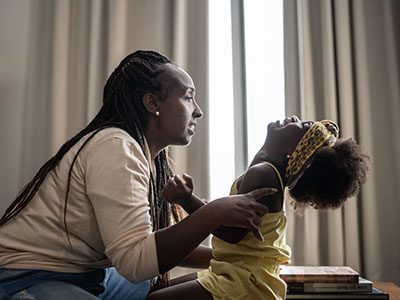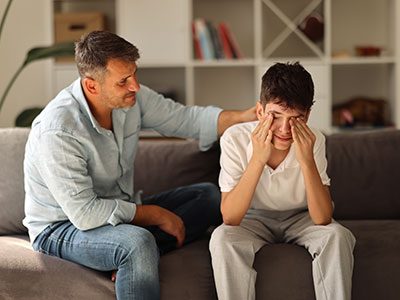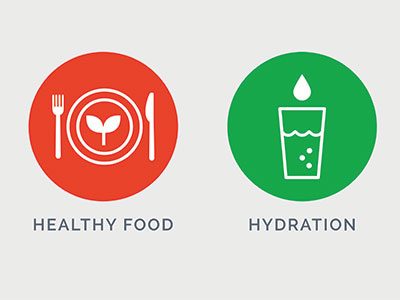Because of the COVID-19 pandemic, youth are spending a lot more time online. For many kids — especially teens — communicating with peers virtually has been the only way to safely maintain relationships with friends and decrease isolation and loneliness. However, spending more time online can also lead to an increased risk of cyberbullying.
What is cyberbullying?
Cyberbullying is bullying, or repeated aggressive behavior, that takes place on digital devices like cell phones, computers and tablets. It includes things such as sending hurtful text messages or emails, or posting embarrassing comments or pictures on social networking sites, such as Instagram or Snapchat. Cyberbullying can occur day and night — any time a child has access to their phone or tablet — and it doesn’t stop when children sleep or finish school for the day.
Examples of cyberbullying include:
- Name calling, spreading rumors, or sending threats.
- Distributing private or unauthorized photos to embarrass or harass someone else.
- Writing mean comments on someone’s Instagram, TikTok or Facebook.
- Using apps or anonymous accounts to send harmful messages or pretending to be someone else.
Signs your child is being bullied online
Pay attention to changes in your child’s mood, grades and interests. Do they seem more down or depressed, especially after being online? Do they try to avoid school and interacting with peers online? Are they experiencing a drop in grades or decline in academic performance? These may be signs that it’s time to start a conversation about how your child communicates with peers online.
How to talk to your child about cyberbullying
It’s important to talk to your kids about what they are doing and seeing online. As a parent, you want to keep an open line of communication and trust. You should talk to them frequently about the online activities they are involved in, but be strategic when you talk to them and don’t badger them with questions first thing in the morning or late at night. For example, ask them:
- What is your favorite app and how do you use it?
- Have you ever been contacted by someone online that you don’t know? How did you respond?
- Have you ever had to delete a post or comment on your social media page that was written by someone else? What did they do?
Be sure to talk to your kids about Internet etiquette in general as well:
- Encourage your child to turn all social media accounts to private and teach them how to make decisions of who to keep on ‘friends’ lists.
- Set clear expectations for responsible online behavior and phone use.
- Collect phones, tablets and computers before your child goes to bed at night. Keep a communal charging space.
- Respect for adolescents’ privacy is important, but you are entitled and responsible for your child’s safety and well-being.
- Tell your children that you may review their online communications periodically. It is reasonable to require your child to share passwords to their phone and other accounts/apps. Check out other parental control settings available through your cell service and internet providers as well as the devices themselves. There are helpful apps that allow you to receive reports of activity.
It’s also important to be equally alert to the possibility that your child is bullying others online, even if unintentionally.
What to do if you think your child is being bullied online
If you think your child is being cyberbullied, having a conversation with your child is an important first step. There are options to report inappropriate behavior on most social media platforms.
If the person attends your child’s school, familiarize yourself with their school policies/procedures and know your rights. Notify the school according to their policies and maintain regular communication about the situation. If your child is being bullied by an anonymous person with video games or Instagram teach your kids how to block users. Any concerns for safety or wellbeing should be reported to law enforcement.
Cyberbullying tips for kids
- If you’re being bullied online, tell an adult about the cyberbullying, even if it does not directly affect you, particularly if there is anything threatening in the messages.
- Do not retaliate or try to get back at the person bullying — this can make harassment worse and make it unclear who first instigated the aggression.
- Block future communication and clean up your friend groups — check out privacy settings on your device and accounts.
Remember: It is best to be proactive rather than reactive. See the steps above for parental controls and other strategies to monitor their activity.
References & resources
 https://riseandshine.childrensnational.org/wp-content/uploads/2025/11/two-friends-feature.jpg
300
400
Danielle Robbins
https://riseandshine.childrensnational.org/wp-content/uploads/2017/11/childrens_riseandshine_logo.jpg
Danielle Robbins2025-11-13 13:55:082025-11-14 10:17:49Navigating friendships when your child has epilepsy
https://riseandshine.childrensnational.org/wp-content/uploads/2025/11/two-friends-feature.jpg
300
400
Danielle Robbins
https://riseandshine.childrensnational.org/wp-content/uploads/2017/11/childrens_riseandshine_logo.jpg
Danielle Robbins2025-11-13 13:55:082025-11-14 10:17:49Navigating friendships when your child has epilepsy






















Leave a Comment
Want to join the discussion?Feel free to contribute!